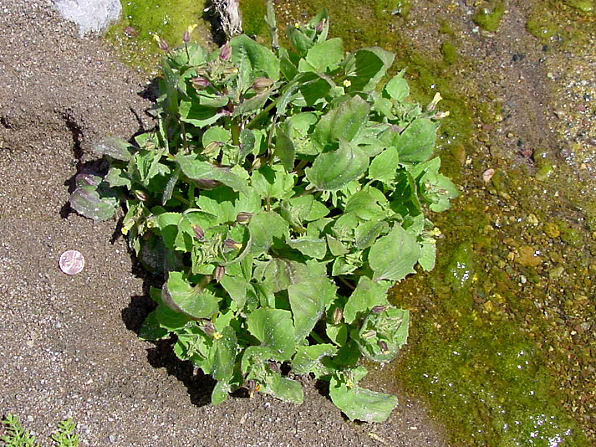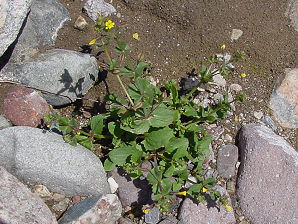Arizona Wild Flowers
Pictures, Photos, Images
Descriptions, Information, Reviews.
Monkey Flower, Mimulus guttatus.
We Are Proud Of Our SafeSurf Rating!
Click On Any Of The Following Links By Amazon.Com
For Books, & Videos About Wildflowers Of Arizona & The Southwest USA. No Obligation!
 |
| Monkey Flower, Mimulus guttatus. Photo Taken April 25, 2005. |
|---|
 | |
| Monkey Flower, Mimulus guttatus. | Monkey Flower, Mimulus guttatus. |
|---|
Monkey Flower.
We wish to thank Wikipedia, the free encyclopedia for some of the information on this page. We share images and information with Wikipedia. An annual to sometimes perennial that grows in springs or along creeks. Many flowers during the months of spring - summer. Seep monkey flower is loved by hummingbirds and disliked by deer. When the habitat of this monkeyflower dries out, the plants become a mass of brown hollow stems. It's leaves were said to be eaten fresh by Native Americans. We do not recommend doing so.
Quick Notes:
Height: Height about 3 - 30 inches. Spreading out to about 2 - 4 foot wide.
Seed Pod: Thorny, globose, walnut-sized 1-1/2 inches in diameter with many small, slender spines.
Flowers: The small yellow flowers have a lower lip ( 3 lobes ) much longer than the upper lip ( 2 lobes ). They reach about 1 1/2 inchs long. There are small red spots in the throat.
Flowering Time: March to October.
Leaves: Toothed, opposite, oval, leaves, up to 4 inches long with the lower ones stalked.
Found: Purslane is a native plant of Persia (Iran) where it was used over 2,000 years ago. It was introduced into the United States from southern Europe. Now it is most abundant in the eastern United States, and the least common in the Pacific Northwest.
Hardiness:
Soil pH requirements:
Sun Exposure:
Elevation: 0 - 7,500 Feet.
Habitat: It can be found growing in wet meadows along streams, seepage areas, near springs. Throughout North America.
Miscellaneous: Flowering Photos Taken In Castle Creek, Arizona. April 25, 2005.
|
We Are Proud Of Our SafeSurf Rating!
Click On Any Of The Following Links By Amazon.Com
For Books, & Videos About Wildflowers Of Arizona & The Southwest USA. No Obligation!
| © 1966 - Present, Audrey, Eve, & George DeLange |
